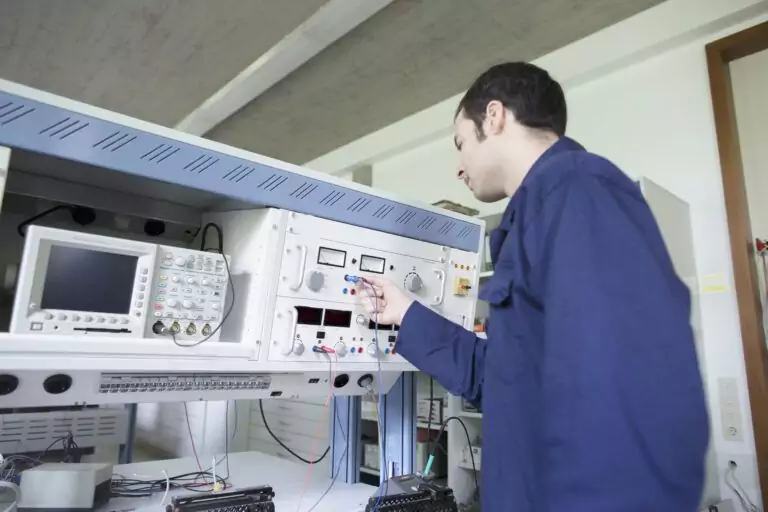In the fast-paced world of electrical design, having the right tools and software at your disposal isn’t just a luxury; it’s a necessity. From crafting detailed schematics to simulating complex circuits, the technology you use can significantly impact the efficiency, accuracy, and innovation of your projects. Whether you’re a seasoned electrical designer or just starting out, navigating the vast sea of available software options can be daunting.
This article dives into the top software and tools for electrical designers, highlighting key features and benefits to help you make an informed decision. Whether you’re already in the field or exploring a potential career in Electrical Design, understanding the right tools is essential. From the industry-standard AutoCAD Electrical to the collaborative capabilities of SolidWorks Electrical and the precision of Altium Designer for PCB design, we’ve got you covered. So, let’s plug in and explore the digital tools that power today’s electrical design landscape, ensuring your projects are not just completed but electrified with success.
AutoCAD Electrical for Schematics
AutoCAD Electrical, a cornerstone in the domain of computer-aided design (CAD), is meticulously crafted to meet the unique needs of electrical engineers and designers. This software is distinguished by its comprehensive suite of features specifically designed for the creation, modification, and documentation of electrical control systems. The primary goal of AutoCAD Electrical is to enhance productivity, reduce errors, and ensure a seamless integration of electrical schematic design into the broader engineering workflow.
From initial concept to detailed design and through to documentation and reporting, it empowers electrical professionals to work more efficiently, accurately, and collaboratively.
Standard in Electrical Design Documentation
AutoCAD Electrical emerges as the definitive standard in electrical design documentation, providing a sophisticated platform that markedly enhances the efficiency and accuracy of electrical engineering endeavours. At its core, the software excels by streamlining intricate processes and ensuring adherence to industry standards. It automates the creation of essential documents, such as the bill of materials (BOM) reports and wire numbering, thereby not only conserving time but also significantly diminishing the likelihood of human error.
This meticulous approach to documentation ensures precision and uniformity, making AutoCAD Electrical an indispensable tool in the realm of electrical design.
Extensive Electrical Symbol Libraries
At the heart of AutoCAD Electrical‘s prowess is its extensive library of electrical symbols, which includes a vast array of manufacturer parts. This comprehensive collection empowers engineers and designers to swiftly locate and incorporate the necessary components into their designs, facilitated by an intuitive drag-and-drop interface. The provision of these pre-designed symbols accelerates the schematic creation process. It ensures compliance with industry standards, as each symbol meticulously mirrors the specifications and standards of its real-life counterpart.
The integration of such an extensive symbol library into the electrical design workflow underscores AutoCAD Electrical‘s commitment to precision, efficiency, and adherence to industry standards.
SolidWorks Electrical for Collaboration
SolidWorks Electrical excels in seamlessly integrating electrical and mechanical design, creating a collaborative environment that is pivotal for the success of product development teams. This software is designed to ensure that electrical schematics and mechanical components are perfectly aligned, streamlining the entire development process. By facilitating real-time collaboration, it enables teams to work concurrently on projects, significantly reducing errors and saving valuable time.
Synchronises Electrical and Mechanical Design
SolidWorks Electrical masterfully ensures that electrical and mechanical design components are synchronised, creating a cohesive and unified approach to product development. This critical synchronisation eliminates the traditional barriers between electrical and mechanical disciplines, fostering a collaborative workflow that significantly boosts both efficiency and precision. By seamlessly aligning electrical schematics with mechanical components in real-time, SolidWorks Electrical eradicates discrepancies, drastically reducing the likelihood of errors and the need for subsequent revisions.
Streamlines Complex Product Development
Leveraging its sophisticated collaboration capabilities, SolidWorks Electrical effectively streamlines the intricacies of product development. It empowers multidisciplinary teams to collaborate in real time, enabling simultaneous work on a unified project framework. This approach not only expedites the design cycle but also ensures consistent alignment across all project facets.
Consequently, products are developed more swiftly and with higher accuracy, aligning with the rapid pace and exacting standards of the current market landscape.
Altium Designer for PCB Design
Altium Designer emerges as a leading solution in the realm of PCB design software, tailored to facilitate high-precision board design. It is adept at accommodating both flexible and rigid PCBs, showcasing its versatility across various applications. Altium Designer equips users with a sophisticated design environment, enabling the crafting of complex circuitries while streamlining the overall design workflow.
High-Precision Board Design Features
Altium Designer excels with its high-precision board design features, meticulously crafted to enable the creation of complex and accurate PCB layouts. Its arsenal of advanced tools supports the precise placement of components and the intricate routing of traces, pivotal for optimising the performance and reliability of the final electronic product. This level of precision is indispensable for adhering to the exacting standards demanded by contemporary electronic devices, where precision is not just preferred but essential.
Support for Flexible and Rigid PCBs
Altium Designer enhances its capabilities to provide robust support for both flexible and rigid printed circuit boards (PCBs), catering to the diverse needs of the electronics industry. This adaptability opens avenues for innovation in various applications, from the flexibility required in wearable technology to the durability needed in aerospace electronics. With Altium Designer, designers are equipped to effortlessly transition between different PCB types, unleashing the potential to redefine the limits of electronic design.
Siemens NX for Integrated Design
Siemens NX emerges as a leading force in the integrated design landscape, offering a comprehensive, unified electrical and mechanical environment. Renowned for its modular and system design capabilities, Siemens NX significantly simplifies the development of complex products. It fosters a cohesive workflow that empowers designers and engineers to collaborate with unparalleled efficiency and precision.
Unified Electrical and Mechanical Environment
Siemens NX excels in creating a unified electrical and mechanical environment, effectively bridging the gap between these two critical disciplines. This integration fosters a synergistic workflow, where electrical and mechanical designs are not just aligned but intrinsically interconnected from the very beginning. The result is a streamlined design process that not only boosts efficiency but also elevates the overall quality and functionality of the final product.
Modular and System Design Capabilities
With its modular and system design capabilities, Siemens NX introduces a level of flexibility and efficiency in developing complex products that are unparalleled. This modular approach allows design teams to tackle individual components or systems within larger assemblies in a more organised and manageable manner. Such capabilities are instrumental in supporting scalable and adaptable product development, empowering teams to respond swiftly to evolving market trends or technical advancements.
PSpice for Circuit Simulation
PSpice is a foundational tool in the realm of circuit simulation, celebrated for its industry-leading accuracy in analysis. Essential for engineers and designers aiming to validate electrical circuit behaviours preemptively, PSpice stands out with its extensive model library for components. This enables the precise simulation of a wide range of circuits.
Industry-Leading Accuracy in Analysis
PSpice sets the standard with its industry-leading accuracy in circuit analysis, empowering engineers to validate their designs confidently. This unparalleled precision is crucial for accurately predicting how circuits will behave under various scenarios, thereby significantly mitigating the risk of errors and ensuring the reliability of the final product.
Comprehensive Model Library for Components
At the heart of PSpice‘s capabilities is its comprehensive model library for components, which covers an extensive range of parts essential for circuit design. This vast repository enables designers to conduct simulations and analyses with remarkable specificity and accuracy, paving the way for the refinement and optimisation of designs well before the manufacturing phase begins.
MATLAB for Algorithm Development
MATLAB stands as a pivotal tool for algorithm development, particularly valued in the realms of engineering and science for its advanced capabilities in control system design and extensive signal processing features. Offering a high-level programming environment, it empowers researchers and engineers to tackle complex challenges and foster innovation with efficiency. The essence of MATLAB‘s utility is in its facilitation of rapid algorithm development and iteration, complemented by the immediate visualisation of results and straightforward modification processes.
Powerful for Control System Design
MATLAB excels in the realm of control system design, offering a suite of advanced tools that empower engineers to craft and analyse dynamic systems meticulously. Its comprehensive functionalities support the modelling, simulation, and testing of control systems, ensuring their performance and stability meet the highest standards.
Extensive Signal Processing Capabilities
MATLAB stands out for its extensive signal processing capabilities, providing a robust framework for the detailed analysis, visualisation, and processing of complex signals. This aspect is indispensable for tasks that involve handling large datasets or extracting actionable insights from intricate signal patterns, thereby significantly improving the precision and efficiency of data analysis efforts.
Choosing the Right Software or Tool

Selecting the appropriate software or tool is pivotal for the success of any electrical design project. The decision hinges on a detailed analysis of the project’s specific requirements, including the complexity of the design, collaboration needs among team members, and compatibility with existing engineering tools. Furthermore, assessing the cost-effectiveness of the software over the long term is crucial, taking into account not just the upfront costs but also the potential for savings in time and resources down the line.
Match Software Capabilities with Project Needs
It’s crucial to ensure that the software capabilities precisely align with project needs. This careful alignment guarantees the selected tools are fully equipped to address the project’s specific complexities and requirements, thereby optimising the design process and enhancing the project’s final outcomes.
Collaboration Features for Team Projects
For team projects, collaboration features stand out as indispensable, facilitating smooth communication and efficient data exchange among team members. These features are the backbone of a cohesive workflow, essential for upholding consistency and maximising efficiency from start to finish.
Compatibility with Current Engineering Tools
Evaluating compatibility with existing engineering tools is a critical step, ensuring seamless integration of new software into the established engineering ecosystem. This compatibility is key to avoiding disruptions and capitalising on existing resources, thereby boosting overall productivity.
Budget and Cost-Effectiveness Analysis
Performing a comprehensive budget and cost-effectiveness analysis is paramount. This evaluation assesses the software’s long-term value, factoring in not just the upfront cost but also the potential for significant savings in time and resources. Such an analysis supports a more informed and strategic software selection process.
Why are Specialized Software and Tools Important?
Specialised software and tools are essential in the realm of electrical design for several reasons. They provide precision and efficiency, enabling engineers to accurately model, simulate, and analyse complex systems with confidence. This level of specificity is key to reducing errors and enhancing the quality of the final product.
Moreover, these tools are catalysts for innovation, offering advanced features that pave the way for new ideas and solutions. They also facilitate collaboration among team members, ensuring projects stay on track both in terms of time and budget, regardless of geographical barriers. Additionally, their compatibility with existing systems and workflows guarantees a seamless integration process, optimising productivity and minimising any potential disruptions.
Ultimately, specialised software and tools are indispensable assets in modern electrical design projects, propelling the frontiers of technology and engineering forward.
Key Features in Electrical Design Software
The utility of electrical design software is anchored in several key features that address the multifaceted requirements of projects and professionals in this domain. These core features collectively enhance the efficiency, innovation, and accuracy of the engineering workflow.
Schematic Capture for Complex Circuit Design
Schematic capture stands as a fundamental feature for the intricate design of complex circuits, offering engineers a powerful tool to document and visualise electrical connections and components accurately. This capability is crucial for laying the solid foundation required for successful circuit design and project execution.
PCB Layout Tools for Board Design
PCB layout tools are indispensable in the realm of board design, enabling the precise physical arrangement of electronic components on boards. These tools are vital for optimising the use of space on the PCB, ensuring both the functionality and manufacturability of the final electronic product.
Simulation Tools for Performance Testing
Simulation tools are essential for the thorough testing and analysis of electrical designs under a variety of conditions. They empower engineers to preemptively identify and rectify potential issues, significantly reducing the risk of errors in physical prototypes.
Integration with Mechanical CAD Software
Integration with mechanical CAD software is critical for achieving a comprehensive and cohesive approach to product development. This seamless integration bridges the gap between electrical and mechanical design processes, enhancing collaboration and fostering innovation across different engineering disciplines.
Empowering Electrical Design with the Right Tools
In today’s fast-paced electrical design world, selecting the right software and tools is paramount for precision, collaboration, and innovation. From AutoCAD Electrical’s robust schematic capabilities to the collaborative strengths of SolidWorks Electrical and the high-precision board design features of Altium Designer, the right tools enable designers to tackle complex projects with confidence and efficiency. With advancements in simulation, PCB layout, and seamless integration with mechanical CAD systems, electrical designers can stay ahead in an ever-evolving industry.
At Vista Projects, we specialise in delivering cutting-edge engineering solutions that leverage the latest tools and software, ensuring your projects are completed with precision, efficiency, and innovation. Our team leverages top-tier design software to deliver outstanding results, from concept through execution.
Ready to power up your next project? Connect with Vista Projects today to explore how we can bring your electrical design vision to life with the right tools and expertise.









